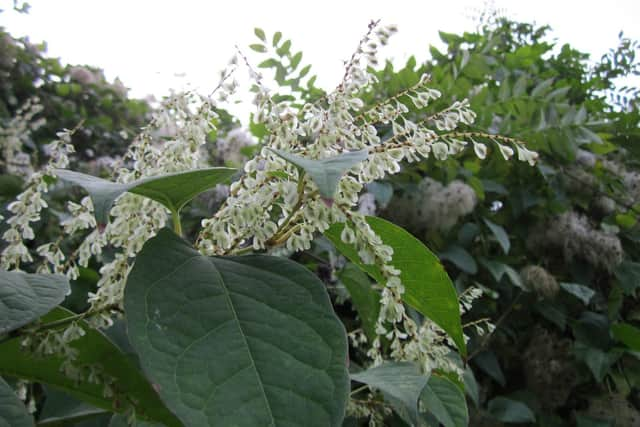Hucknall and Bulwell are among county hotspots for Japanese Knotweed outbreaks
and live on Freeview channel 276
Both Hucknall and Bulwell glow red – the high danger colour – on the map with Bulwell showing 193 occurrences of the plant within a four-kilometre radius, while in Hucknall, the map shows 140 occurrences within the four-kilometre radius.
Populated with almost 55,500 known occurrences of the UK’s most invasive plant, Exposed is the most comprehensive online record of knotweed infestations, charting the spread of the plant across the country.
Advertisement
Hide AdAdvertisement
Hide AdUsers can enter their postcode to discover the number of sightings nearby, with hotspots highlighted in yellow, orange and, in the worst cases, red.


The map enables homeowners to understand the risk knotweed poses to their home, or one they wish to buy.
Japanese knotweed first arrived in UK in 1850 in a box of plant specimens delivered to Kew Gardens.
Favoured for its rapid growth and pretty heart-shaped leaves, it was quickly adopted by gardeners and horticulturalists who were oblivious to its invasive nature.
Advertisement
Hide AdAdvertisement
Hide AdKnotweed hibernates over winter but in March or April it begins to grow, with red or purple spear-like shoots emerging from the ground which quickly grow into lush green shrubs with pink-flecked stems and bamboo-like canes.
For homeowners, the plant can pose serious problems if left unchecked, with the potential to grow up through cracks in concrete, tarmac driveways, pathways, drains and cavity walls.
The roots can grow as deep as three metres and spread up to seven metres horizontally.
While serious damage to property is rare thanks to regulation which requires knotweed to be dealt with when a property is sold to a buyer using a mortgage or if it encroaches across a garden boundary, it commonly impacts use of the garden, causes legal disputes between neighbours and can impact a property’s value by around five per cent.
Advertisement
Hide AdAdvertisement
Hide AdAs well as the interactive map, homeowners and buyers who are unsure whether a property is affected by knotweed can now call in help from a specially-trained trio of sniffer dogs, Mick, Mack and Buddy, who will search a property for the unique scent of the plant’s rhizome even where it’s dormant beneath the ground or has been deliberately concealed.
Nic Seal, founder and managing director of Environet, said: “Japanese knotweed tends to strike fear into the hearts of homeowners but as long as they’re aware of its presence and take action to remove it before it causes any serious damage or spreads to a neighbour’s property, there’s no reason to panic.
"By publishing the 2022 hotspots for Nottinghamshire we hope to raise awareness and encourage people in the area to be vigilant for signs of knotweed as the growing season takes off, so they can act quickly if needed.
"Anyone living near or moving to one of these hotspots would be wise to check their garden carefully, enter their postcode into Exposed to find out how many known occurrences are nearby and if in doubt, seek expert help.”
